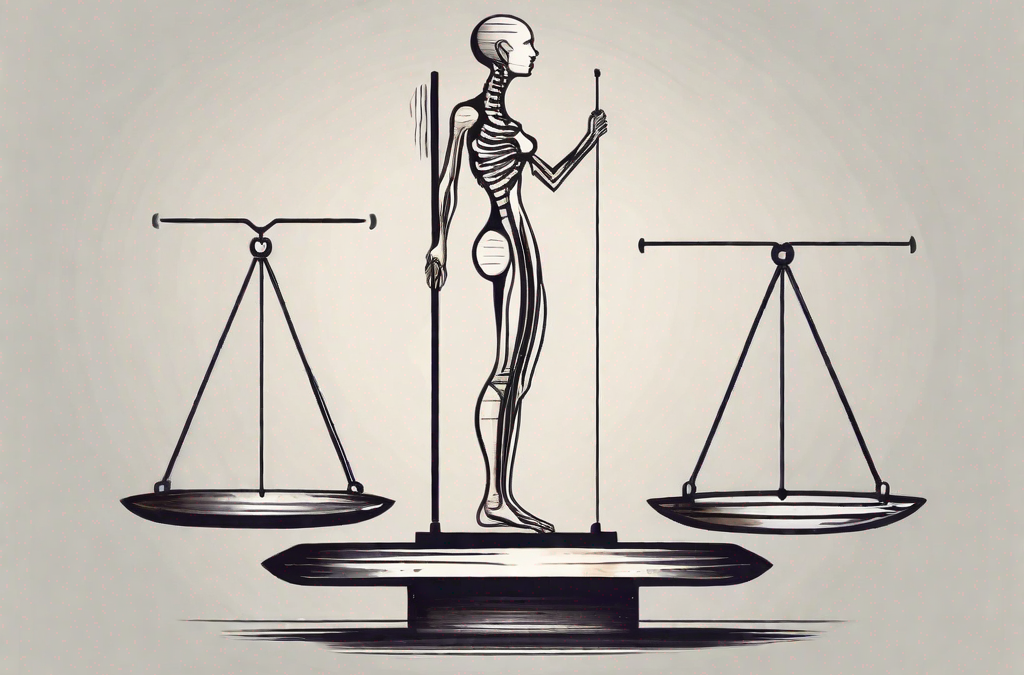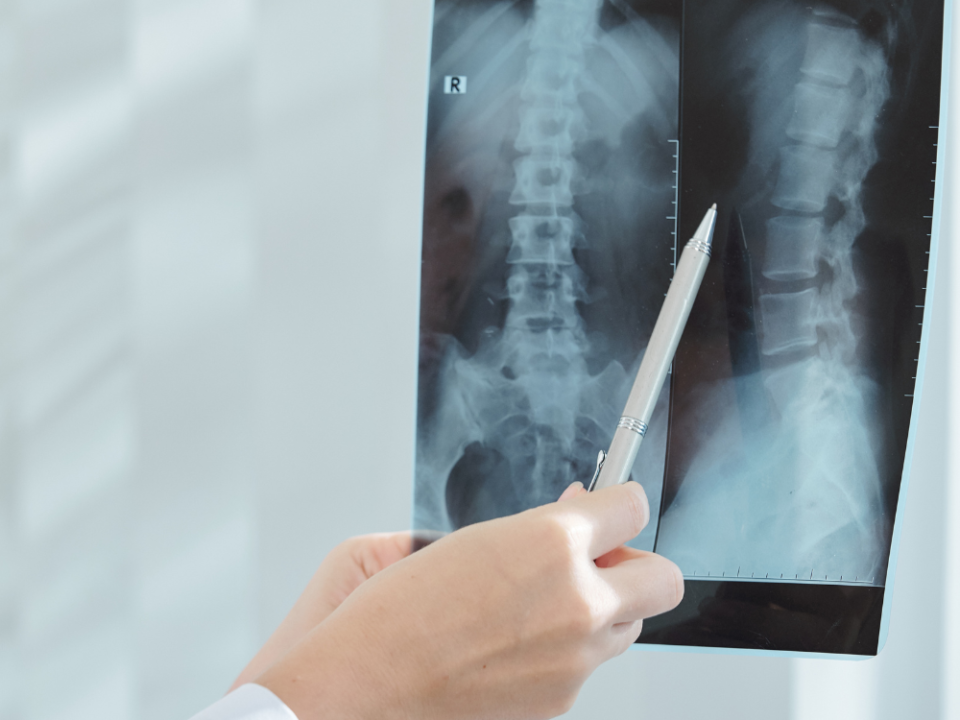
Understanding Network Spinal: A Revolutionary Approach to Wellness and Healing
September 14, 2023
Spinal Anatomy in Sports: Strategies to Prevent Injuries and Enhance Performance
September 14, 2023The human body is truly remarkable, and one of its most incredible feats is the ability to maintain an upright posture. This balancing act is made possible by the intricate network of bones, muscles, and ligaments that make up our spinal column. In this article, we will explore the anatomy and biomechanics of the spinal column, as well as its role in supporting our upright posture and maintaining overall spinal health.
Understanding the Anatomy of the Spinal Column
The spinal column, also known as the vertebral column or backbone, is composed of a series of small bones called vertebrae. These vertebrae are stacked on top of each other, separated by intervertebral discs, which act as shock absorbers. The spinal column can be divided into five regions: the cervical (neck) region, the thoracic (chest) region, the lumbar (lower back) region, the sacral (pelvic) region, and the coccygeal (tailbone) region.
The Vertebrae and Intervertebral Discs
Each vertebra consists of a round body at the front and a neural arch at the back, which surrounds and protects the spinal cord. The intervertebral discs sit between adjacent vertebrae and provide cushioning and flexibility. They are made up of a tough outer layer called the annulus fibrosus and a gel-like inner core called the nucleus pulposus.
The vertebrae are fascinating structures that play a crucial role in the overall function of the spinal column. Each vertebra is uniquely designed to support the weight of the body and protect the delicate spinal cord. The round body of the vertebra acts as a strong foundation, distributing the weight evenly along the spinal column. The neural arch, with its intricate bony structures, provides a protective barrier for the spinal cord, shielding it from any potential damage.
The intervertebral discs are remarkable structures that contribute to the flexibility and shock-absorbing capabilities of the spinal column. The annulus fibrosus, with its fibrous composition, provides strength and stability to the disc, while the nucleus pulposus, with its gel-like consistency, allows for movement and cushioning. Together, these components work harmoniously to ensure the spine can withstand various forces and movements.
The Spinal Curves and Their Roles
The spinal column has four natural curves when viewed from the side: the cervical and lumbar regions curve inward, while the thoracic and sacral regions curve outward. These curves are not only aesthetically pleasing but also serve important functions in the overall biomechanics of the spine.
The inward curves, known as lordotic curves, play a crucial role in maintaining balance and stability. The cervical lordotic curve, present in the neck region, helps support the weight of the head and allows for smooth movement. Similarly, the lumbar lordotic curve in the lower back region helps distribute the weight of the upper body and provides stability during activities such as walking and lifting.
The outward curves, known as kyphotic curves, are equally important for the overall function of the spine. The thoracic kyphotic curve, present in the chest region, helps protect the vital organs and provides a stable base for the attachment of the ribs. The sacral kyphotic curve, located in the pelvic region, supports the weight of the upper body and helps maintain balance while standing or sitting.
Interested in improving your posture and spinal health? Dr. Welchlin and the Center for Specialty Care team are here to guide you. Reach out to us now to schedule your consultation and take the first step toward a healthier, balanced you.
The Role of Ligaments and Muscles in the Spinal Column
Ligaments are strong bands of connective tissue that hold the vertebrae together and provide stability to the spinal column. They play a crucial role in maintaining the integrity of the spine and preventing excessive movement or misalignment. Without ligaments, the vertebrae would not be able to function as a cohesive unit, and the spine would lack the necessary stability to support the body.
Muscles, on the other hand, are dynamic structures that contribute to the overall strength and movement of the spinal column. They are responsible for maintaining proper alignment, enabling flexibility, and providing support during various activities. The muscles surrounding the spinal column work in harmony to control movement, stabilize the spine, and protect it from potential injuries.
Understanding the role of ligaments and muscles in the spinal column is essential for comprehending the complexity and functionality of this remarkable structure. Ligaments and muscles work together to ensure the stability, flexibility, and strength of the spine, allowing us to perform a wide range of movements and activities with ease.
The Biomechanics of the Spinal Column
To understand how the spinal column supports upright posture, it is important to examine its biomechanics – how it distributes loads, allows flexibility, and interacts with external forces such as gravity.
The spinal column, also known as the vertebral column or backbone, is a complex structure consisting of 33 individual bones called vertebrae. These vertebrae are stacked on top of each other, forming a flexible and sturdy column that supports the weight of the head, neck, torso, and upper limbs.
Load Bearing and Stress Distribution
The spinal column bears the weight of the body and distributes it evenly across the vertebrae and intervertebral discs. This distribution of load minimizes the stress on any single segment and prevents excessive wear and tear. The intervertebral discs, located between each pair of vertebrae, act as shock absorbers, cushioning the impact of daily activities such as walking, running, and jumping.
These discs consist of a tough outer layer called the annulus fibrosus and a gel-like inner core called the nucleus pulposus. The annulus fibrosus provides strength and stability to the disc, while the nucleus pulposus allows for flexibility and movement.
Flexibility and Movement
The spinal column’s design allows for a remarkable range of motion, enabling us to perform various activities and movements. The intervertebral discs play a crucial role in this flexibility. They allow for bending, twisting, and side bending, providing the spine with the ability to adapt to different positions and postures.
In addition to the intervertebral discs, the facet joints between the vertebrae also contribute to the spine’s flexibility. These joints are located at the back of the spinal column and allow for smooth gliding and rotation between adjacent vertebrae. Together, the intervertebral discs and facet joints enable us to perform everyday tasks such as reaching, bending, and turning.
The Role of Gravity in Spinal Alignment
Gravity plays a significant role in maintaining proper spinal alignment. When we stand or sit upright, gravity exerts a downward force on our bodies. To counteract this force, the spinal column generates an upward force, keeping the body in equilibrium.
Proper spinal alignment is essential for the efficient distribution of weight and the prevention of excessive strain on individual structures. When the spine is correctly aligned, the weight is distributed evenly, reducing the risk of developing conditions such as herniated discs, muscle imbalances, and postural abnormalities.
In conclusion, the biomechanics of the spinal column are fascinating and intricate. Its ability to bear loads, provide flexibility, and maintain alignment is crucial for our overall well-being and functionality. Understanding these biomechanical principles can help us take better care of our spines and promote a healthy and pain-free lifestyle.
The Spinal Column and Upright Posture
The ability to maintain an upright posture sets humans apart from many other animals. It provides us with numerous advantages, such as better visibility, efficient movement, and reduced strain on certain body parts. Let’s explore how the spinal column supports our upright posture.
The Evolution of Upright Posture
Upright posture is a product of human evolution. As our ancestors started walking on two limbs, the spinal column underwent significant changes to better support an erect posture. These changes included the development of an S-shaped curvature in the spine and an increased size of the lumbar region.
How the Spine Facilitates Upright Posture
The spinal column acts as a flexible and stable pillar that supports the weight of the upper body and helps maintain balance. The natural spinal curves, along with the intervertebral discs and ligaments, enable the spine to absorb shocks, distribute forces evenly, and maintain proper alignment.
The Impact of Poor Posture on the Spine
Poor posture, such as slouching or excessive rounding of the shoulders, can have detrimental effects on the spine. It increases the strain on the muscles, ligaments, and intervertebral discs, leading to discomfort, pain, and an increased risk of injury. Maintaining good posture is vital for long-term spinal health.
Maintaining a Healthy Spinal Column
To keep the spinal column in optimal condition, it requires proper care and attention. Let’s explore some essential factors for maintaining a healthy spine.
Importance of Regular Exercise
Regular exercise is crucial for spinal health. It helps strengthen the muscles that support the spine, maintain flexibility, improve posture, and prevent certain conditions, such as osteoporosis. Engaging in activities like walking, swimming, yoga, or strength training can all contribute to a healthy spine.
Proper Lifting Techniques
Improper lifting techniques can put significant strain on the spine and increase the risk of injuries. When lifting heavy objects, it is essential to use the legs rather than the back, engage the core muscles, and maintain a straight posture. This helps distribute the load properly and reduces the strain on the spine.
The Role of Nutrition in Spinal Health
Good nutrition plays a vital role in maintaining the health of all body systems, including the spine. Adequate intake of nutrients like calcium, vitamin D, and protein is essential for strong bones and muscles. It is also important to maintain a healthy weight, as excess weight can put added strain on the spine.
In conclusion, the spinal column is a marvel of engineering that enables us to maintain an upright posture. Its intricate anatomy, biomechanics, and interaction with external forces all contribute to our ability to balance and move effectively. By understanding the significance of spinal health and adopting healthy habits, we can ensure a strong and resilient spinal column throughout our lives.
Join the many patients who have improved their posture and quality of life with Dr. Welchlin and his dedicated team at Center for Specialty Care. Begin your journey toward better posture and spinal health today. Your well-balanced future starts here.




